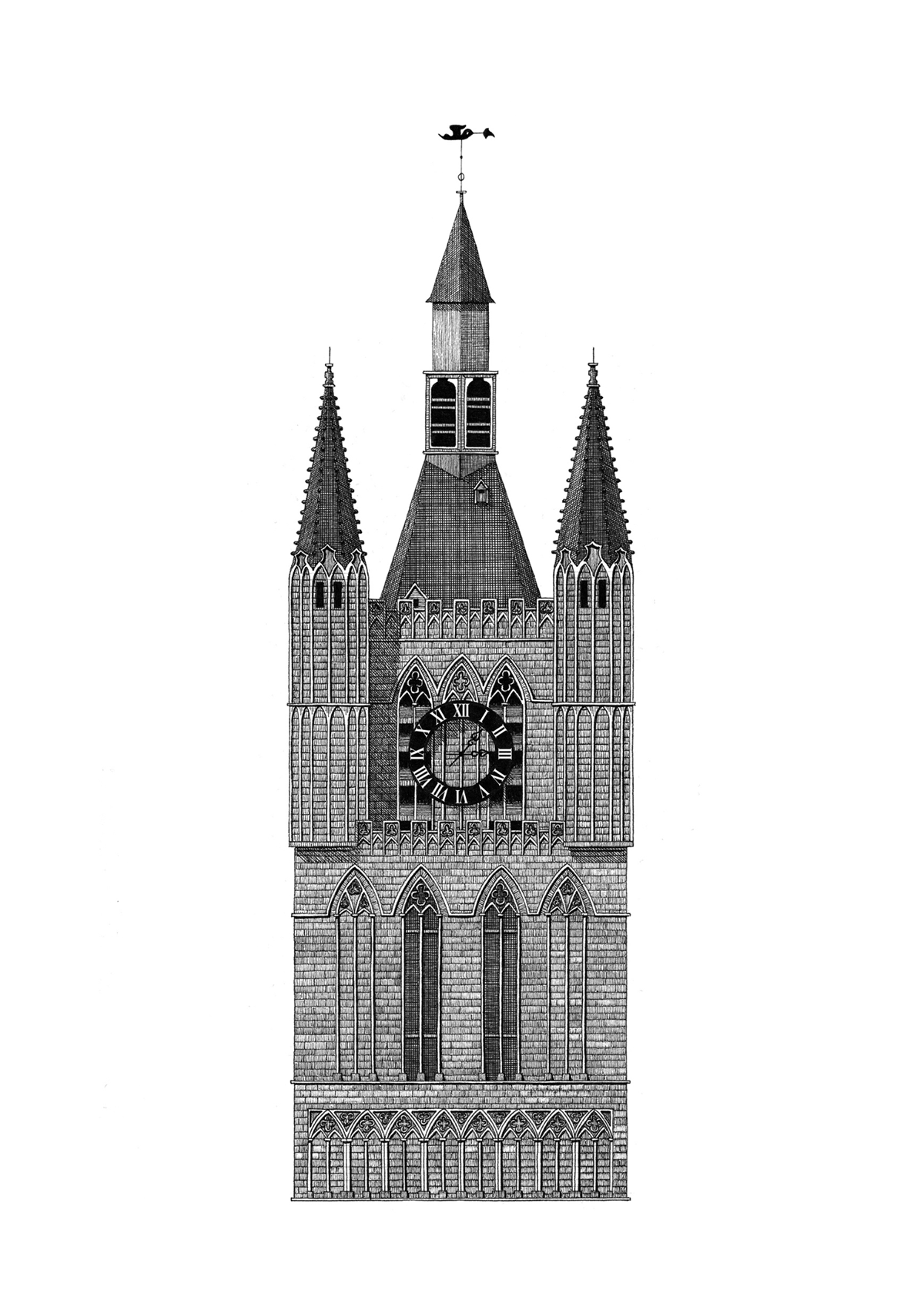
I am going to illustrate the First World War from the Battle of Mons in 1914 to the Battle of Amiens and the Hundred Days Offensive in 1918. I will tell the story through the use of maps, landscape drawings, first hand accounts, typography and iconography to produce A4 posters for each major battle. I am an illustrator not a historian so this is not about uncovering new facts on the First World War. It is about presenting facts in a new an interesting way.

After their defeats at the Battle of Mons and the Battle of Charleroi the French and British armies were faced with a 300-mile fighting retreat. Every village they passed through became a potential battleground to try and slow the German advance. The turning point came at the Marne River. Bolstered by reinforcements and French counter-attacks, the allied forces halted the German advance about 30 miles from Paris.

Antwerp is a city and municipality in Belgium, on the banks of the River Scheldt. The city is linked to the North Sea by the Westerschelde estuary. Antwerp was a bustling port city in 1914 with grand architecture and wide cobblestone streets. When war between France and Germany was declared, Belgium found itself caught in the middle and Antwerp transformed into a city under siege. Tens of thousands of people fled the countryside seeking safety with the city's fortified walls.

As the First World War erupted in 1914, Europe witnessed a clash of empires on an unprecedented scale. Among the early battles of the war was the Siege Of Antwerp. The city was surrounded by a ring of Nineteenth Century forts, collectively known as the National Redoubt. They were meant to deter potential invaders and safeguard the Scheldt estuary, a crucial waterway for international trade.
With the German invasion of Belgium in August 1914, the strategic significance of Antwerp and its port became clear. The city served as a refuge for the Belgian Army and a potential staging ground for Allied forces in Western Europe. To secure their Northern flank the German army set out to capture the city.
The German army laid siege to the city on September 28th, 1914. The Belgian forces along with the British Royal Naval Division manned the city and surrounding forts. The Allies were initially successful in repulsing the German attacks. However, the Germans employed a new and devastating weapon, heavy siege artillery. These guns were capable of firing shells weighing over a tonne and inflicted significant damage on the National Redoubt.
By October 7th, 1914, with the forts and defenses compromised, the decision was made to evacuate Antwerp. The Belgian army withdrew westward towards Ostend whilst the British Royal Naval Division managed to escape by sea. The Germans entered the city on October 10th, 1914, marking the end of the siege.
The capture of Antwerp not only provided a strategic advantage to the Germans but also inflicted heavy casualties on both sides. The Allies lost around 30,000 soldiers most of whom were captured. The German casualty figures are unclear but it is estimated they lost around 66,000 troops.

The Battle of Armentières, also referred to as the Battle of Lille, took place in October 1914 during World War 1. It was part of a wider maneuver known as the Race to the Sea, where both the German and Allied forces attempted to outflank each other's northern flank.
The battle involved fierce fighting, with the British III Corps, supported by some French troops, holding off repeated German attacks. Although the Germans gained some ground, they were unable to capture Armentières. With the German offensive at Ypres becoming the main priority, attacks around Armentières subsided by November.

The First Battle of Ypres, fought from October 19 to November 22, 1914, was the first of several bloody clashes around the Belgian city of Ypres during World War I. It occurred following the inconclusive Battle of the Marne, where the German advance was halted.

Constructed between 1200 and 1304, the Cloth Hall was the beating heart of Ypres' thriving cloth industry. This Gothic masterpiece, featuring a breathtaking 70-meter belfry, housed merchants, weavers, and traders engaged in the lucrative wool and cloth trade. The Hall wasn't just a marketplace; it was a social hub, a symbol of civic pride, and a source of prosperity for the city.

When war was declared in 1914 Ypres emerged as a vital strategic point. Its location near the English Channel made it crucial for both sides. The Germans sought a breakthrough to the Channel ports, while the Allies aimed to prevent encirclement and maintain a connection with the coast. This struggle resulted in not one, but five distinct battles fought around Ypres between 1914 and 1918. The Cloth Hall, once a symbol of peace and prosperity, became a target for German artillery due to its prominence in the landscape. By the end of the war, the building had been reduced to rubble.

After the Marne, both sides engaged in a flanking maneuver known as the "Race to the Sea," rushing north to secure ports on the English Channel.

If you would like to see more of this project or support it on Patreon please visit www.richbanksart.co.uk
